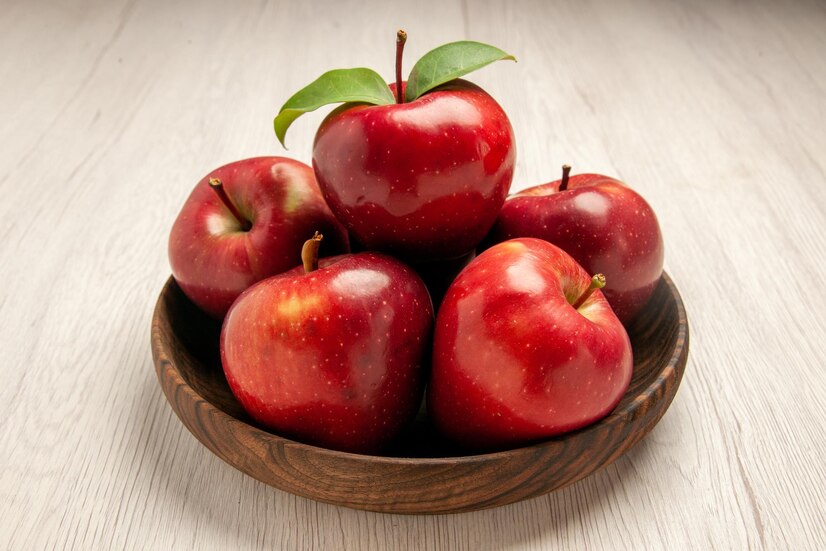Introduction
Apples, known as μηλε in Greek, hold a prominent place in various aspects of life. From their rich history to their diverse applications in cooking and wellness, apples have been cherished across cultures and generations. This article explores the multifaceted world of apples, delving into their history, varieties, nutritional benefits, cultural significance, and more.
The History and Origin of Apples
Apples have a long and storied past, dating back thousands of years. Originating in Central Asia, apples spread to Europe and beyond through trade and exploration. In ancient times, apples were not only a food source but also carried symbolic meanings in mythology and folklore. They were often associated with health, knowledge, and immortality, playing significant roles in stories from various cultures.
Types and Varieties of Apples
The world of apples is vast, with countless varieties grown across different regions. From the sweet Honeycrisp to the tart Granny Smith, each type of apple has its unique flavor profile and uses. Some apples are best for eating fresh, while others are perfect for baking or making cider. Understanding the differences between these varieties helps in selecting the right apple for specific culinary needs.
Nutritional Powerhouse
Apples are packed with essential nutrients that contribute to overall health. They are a great source of dietary fiber, vitamin C, and antioxidants. Consuming apples can aid digestion, boost the immune system, and reduce the risk of chronic diseases. Their low-calorie content also makes them an ideal snack for those looking to maintain a healthy diet.
Culinary Uses of Apples
In the kitchen, apples are incredibly versatile. They can be used in a variety of dishes, both sweet and savory. Popular recipes include apple pies, tarts, and crisps, as well as savory dishes like apple-stuffed pork and salads. Apples can also be made into sauces, juices, and cider, showcasing their adaptability in different culinary traditions.
Cultural Significance of Apples
Throughout history, apples have held symbolic meanings in many cultures. In Western traditions, the apple is often linked to knowledge and temptation, as seen in the story of Adam and Eve. In other cultures, apples symbolize love, beauty, and prosperity. This cultural significance extends to art, literature, and media, where apples frequently appear as motifs and symbols.
Growing and Harvesting Apples
Cultivating apples requires specific conditions, including suitable climate, soil, and care. Apple trees thrive in temperate regions with well-drained soil and adequate sunlight. Proper harvesting and storage techniques are essential to maintain the quality of the fruit. Harvesting typically occurs in late summer to early autumn, depending on the variety and location.
Alternative Uses for Apples
Beyond their culinary uses, apples have several alternative applications. They are commonly used in beauty routines, thanks to their natural acids and vitamins that benefit the skin. Apples can also be used in household hacks, such as freshening the air or as natural cleaners. These uses highlight the practicality and versatility of apples in everyday life.
Fun Facts and Festivals
Apples are celebrated around the world through various festivals and events. These gatherings often include activities like apple picking, cider tasting, and baking competitions. Additionally, there are many interesting facts about apples, such as their role in historical events, the number of varieties that exist, and their significance in different cultures.
Conclusion: Embracing the Versatility and Health Benefits of Apples
Apples, or μηλε, are more than just a fruit; they are a symbol of health, culture, and culinary creativity. From their ancient origins to their modern-day uses, apples continue to be a beloved and versatile part of our lives. Whether enjoyed fresh, cooked, or used in alternative ways, apples offer numerous benefits and endless possibilities.
FAQs about Apples
1. What are the health benefits of eating apples?
Apples are rich in dietary fiber, vitamin C, and antioxidants. They support digestion, boost the immune system, and help reduce the risk of chronic diseases such as heart disease and diabetes.
2. How many varieties of apples are there?
There are over 7,500 varieties of apples grown worldwide, each with unique flavors, textures, and uses. Some popular varieties include Honeycrisp, Granny Smith, Fuji, and Gala.
3. Can apples be used in savory dishes?
Yes, apples can enhance the flavor of many savory dishes. They pair well with meats like pork, add sweetness to salads, and can be incorporated into sauces and stews.
4. What is the best way to store apples to keep them fresh?
Apples should be stored in a cool, dark place. Refrigeration helps extend their shelf life, keeping them fresh for several weeks. It’s best to store them in a plastic bag or a crisper drawer to maintain their moisture.
5. Are there any cultural significances associated with apples?
Apples hold various symbolic meanings in different cultures. In Western traditions, they are often associated with knowledge and temptation, while in other cultures, they represent love, beauty, and prosperity. Apples also appear in many myths, legends, and works of art.
